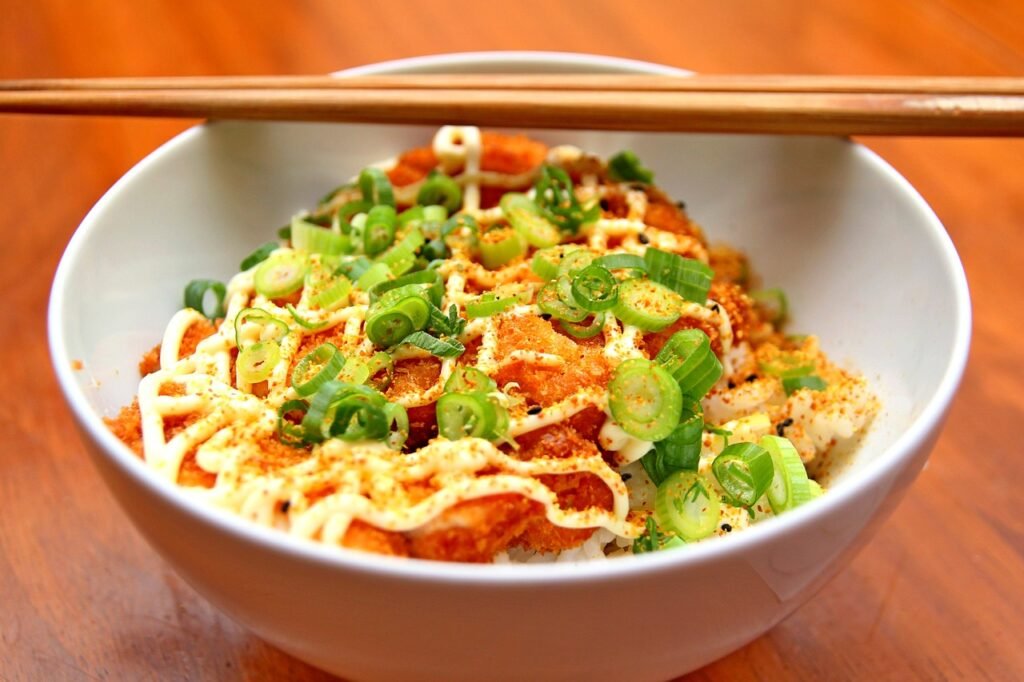
The Wholesome Bowl: Nourishing and Balanced Buddha Bowl Recipes
Buddha bowls have gained popularity in recent years due to their nourishing and balanced nature. These bowls are not only visually appealing but also packed with a variety of nutrients. They typically consist of a base, protein, vegetables, healthy fats, and flavorful dressings. In this article, we will explore the origins of Buddha bowls, the components that make up a wholesome bowl, and the benefits of incorporating them into your diet. Additionally, we will provide three delicious Buddha bowl recipes to inspire your culinary creations.
Key Takeaways
- Buddha bowls are nourishing and balanced meals that consist of a variety of ingredients.
- They typically include a base, protein, vegetables, healthy fats, and flavorful dressings.
- Eating Buddha bowls can provide a range of nutrients and promote overall health and well-being.
- Choosing a nutrient-dense base, such as quinoa or brown rice, is essential for a wholesome Buddha bowl.
- Incorporating plant-based proteins, such as tofu or beans, is a great way to add protein to your Buddha bowl.
What is a Buddha Bowl?

The Origins of Buddha Bowls
Buddha bowls have a fascinating history that dates back centuries. These nourishing and balanced meals have their roots in Buddhist traditions, where monks would gather food from their alms rounds and combine it all in a single bowl. This practice symbolized simplicity, mindfulness, and gratitude. Today, Buddha bowls have evolved into a popular trend in the wellness and food communities, offering a convenient and customizable way to enjoy a variety of nutritious ingredients in one delicious meal.
The Components of a Buddha Bowl
A Buddha bowl is a nourishing and balanced meal that typically consists of a variety of ingredients. These bowls are not only visually appealing but also packed with nutrients. They are a great way to incorporate different food groups into your diet and can be customized to suit your preferences and dietary needs. The components of a Buddha bowl include a base, protein, vegetables, healthy fats, and flavorful dressings.
Benefits of Eating Buddha Bowls
Eating Buddha bowls offers a multitude of benefits for your overall health and well-being. These healthy plant-based bowls are packed with nutrient-dense ingredients that provide essential vitamins, minerals, and antioxidants. By incorporating a variety of colorful vegetables, whole grains, and plant-based proteins, Buddha bowls offer a balanced and nourishing meal option.
Creating a Wholesome Buddha Bowl

Choosing a Base
The base of a Buddha Bowl is an essential component that provides a foundation for the rest of the ingredients. It serves as a nutritious and filling starting point for your meal. When choosing a base, opt for whole grains such as quinoa, brown rice, or farro. These grains are packed with fiber, vitamins, and minerals, making them a healthy choice for your Buddha Bowl. Not only do they add a satisfying texture and nutty flavor, but they also provide sustained energy throughout the day.
Adding Protein
Protein is an essential component of a wholesome Buddha bowl. It provides the building blocks for our muscles, promotes satiety, and helps maintain stable blood sugar levels. Including a variety of protein sources in your bowl ensures that you’re getting a complete range of amino acids. Some great options for protein in your Buddha bowl include tofu, chickpeas, quinoa, and tempeh. These ingredients not only add a satisfying texture to your bowl but also contribute to its nutritional value.
Incorporating Vegetables
When it comes to incorporating vegetables into your Buddha bowl, the possibilities are endless. Leafy greens like spinach, kale, and arugula are a great starting point. They provide a nutrient-rich base and add a vibrant pop of color to your bowl. Roasted vegetables such as sweet potatoes, cauliflower, and Brussels sprouts are also delicious options. They bring a satisfying crunch and a hint of sweetness to the bowl.
To add some crispiness and freshness, consider including raw vegetables like cucumber, bell peppers, and cherry tomatoes. These add a refreshing contrast to the other ingredients. Pickled vegetables such as carrots, radishes, and red onions can also be a great addition. They provide a tangy and slightly sour flavor that complements the other components of the bowl.
To make your Buddha bowl even more nutrient-dense, you can include fermented vegetables like sauerkraut or kimchi. These not only add a unique tangy flavor but also provide beneficial probiotics for gut health.
Here are some vegetable options you can consider for your Buddha bowl:
- Leafy greens: spinach, kale, arugula
- Roasted vegetables: sweet potatoes, cauliflower, Brussels sprouts
- Raw vegetables: cucumber, bell peppers, cherry tomatoes
- Pickled vegetables: carrots, radishes, red onions
- Fermented vegetables: sauerkraut, kimchi
Including Healthy Fats
Incorporating healthy fats into your Buddha bowl is essential for a nourishing and balanced meal. Avocado, olive oil, and nuts are great options to consider. These ingredients not only add a delicious flavor to your bowl, but they also provide important nutrients and promote satiety. Including healthy fats in your Buddha bowl can help support brain health, reduce inflammation, and improve nutrient absorption. Don’t be afraid to get creative with your healthy fat choices!
Enhancing with Flavorful Dressings
Once you have assembled your nourishing Buddha bowl with a variety of fresh ingredients, it’s time to take it to the next level with flavorful dressings. Flavorful Buddha bowl recipes are all about combining different tastes and textures to create a satisfying and delicious meal. Here are some tips to enhance your bowl with tasty dressings:
Delicious Buddha Bowl Recipes
Mediterranean Quinoa Bowl
The Mediterranean Quinoa Bowl is a delicious and nutritious option for a wholesome Buddha Bowl. It combines the flavors of the Mediterranean region with the health benefits of quinoa. Quinoa is a versatile grain that is packed with protein, fiber, and essential nutrients. It is also gluten-free, making it a great choice for those with dietary restrictions. Cooking Tips: To cook quinoa, rinse it thoroughly before cooking to remove any bitterness. Use a 2:1 ratio of water to quinoa and simmer for about 15 minutes until the water is absorbed and the quinoa is tender. Fluff the quinoa with a fork before serving.
Asian Tofu and Veggie Bowl
The Asian Tofu and Veggie Bowl is a delicious and nutritious option for a healthy Buddha Bowl recipe. This bowl is packed with protein, fiber, and vitamins from the tofu and a variety of colorful vegetables. The combination of flavors and textures in this bowl is truly satisfying. The tofu is marinated in a savory sauce, giving it a delicious umami flavor. The vegetables are lightly stir-fried, maintaining their crispness and adding a fresh element to the bowl. The bowl is then topped with a sprinkle of sesame seeds for a crunchy and nutty finish.
Mexican Black Bean Bowl
The Mexican Black Bean Bowl is a delicious and nutritious option for a simple Buddha Bowl. It combines the flavors of black beans, avocado, corn, and salsa for a satisfying meal. This bowl is packed with protein, fiber, and healthy fats, making it a wholesome choice for any meal of the day. The combination of ingredients provides a balance of nutrients, including vitamins, minerals, and antioxidants. It’s a great way to incorporate a variety of vegetables into your diet and enjoy a flavorful and filling meal.
Looking for delicious Buddha bowl recipes? Look no further! At Chefworx, we are all things food and beverage. Our website is your go-to source for mouthwatering recipes, cooking tips, and all things culinary. Whether you’re a seasoned chef or a beginner in the kitchen, we have something for everyone. Visit our website today and explore our collection of delectable Buddha bowl recipes that are sure to satisfy your taste buds. Don’t miss out on the opportunity to elevate your cooking game and impress your friends and family with these flavorful and nutritious meals. Join the Chefworx community and start creating culinary masterpieces today!
Conclusion
In conclusion, Buddha bowls are a nourishing and balanced meal option that offer a variety of health benefits. They are versatile and customizable, allowing you to choose a base, add protein, incorporate vegetables, include healthy fats, and enhance with flavorful dressings. By following the guidelines and recipes provided in this article, you can easily create delicious and wholesome Buddha bowls that will satisfy your taste buds and provide your body with the nutrients it needs. So why not give these wholesome bowls a try and embark on a journey to a healthier lifestyle?
Frequently Asked Questions

What is a Buddha Bowl?
A Buddha Bowl is a nourishing and balanced meal that typically consists of a variety of vegetables, grains, protein, and healthy fats, all served in a bowl.
Are Buddha Bowls only for vegetarians?
No, Buddha Bowls can be enjoyed by anyone, regardless of their dietary preferences. They can be customized to include vegetarian, vegan, or even meat options.
Can I make Buddha Bowls in advance?
Yes, Buddha Bowls are great for meal prepping. You can prepare the components in advance and assemble the bowls when you’re ready to eat.
Are Buddha Bowls healthy?
Yes, Buddha Bowls are generally considered healthy as they are packed with nutrient-rich ingredients. However, the overall healthiness of a Buddha Bowl depends on the ingredients and portion sizes chosen.
Can I customize the ingredients in a Buddha Bowl?
Absolutely! Buddha Bowls are highly customizable. You can choose your favorite vegetables, grains, proteins, and dressings to create a bowl that suits your taste and dietary needs.
Are Buddha Bowls suitable for weight loss?
Buddha Bowls can be a great option for weight loss as they are often low in calories and high in fiber, which can help you feel full and satisfied. However, portion control and ingredient choices are important factors to consider.

